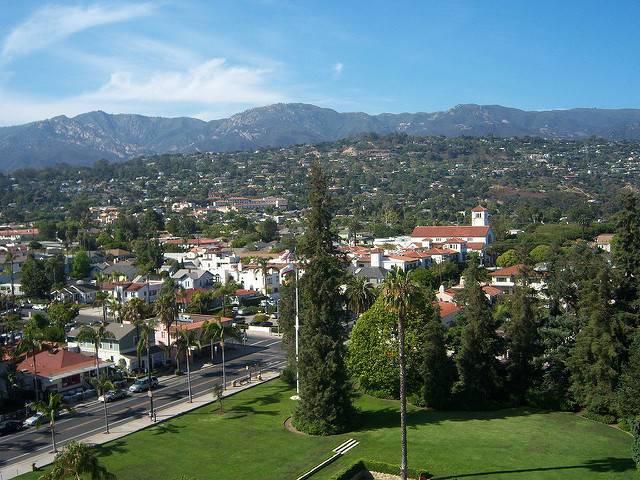
This city of 92,000 on California's central coast is known worldwide for its idyllic vibe, spectacular scenery, white stucco buildings and of course, an NBC soap opera, but now Santa Barbara has a new claim: the 30th U.S. city to commit to generating 100 percent of its electricity from renewables.
After a city council vote last week, Santa Barbara's municipal government has pledged that half of the electricity required to power city-owned buildings and operations will be sourced from clean energy sources. The city promised that 100 percent of its power needs will be met by renewables by 2030.
According to the United Nations’ Climate Action program, Santa Barbara will join a roster of U.S. cities that includes Atlanta, Madison, Pittsburgh, San Diego and San Jose. Other municipalities have made promises to power their cities with 100 percent renewables in the future without committing to a deadline, including Columbia, South Carolina.
The news was welcomed by local environmental groups, including Santa Barbara’s Sierra Club chapter, which for several years has pushed the city and surrounding county to establish more aggressive renewable energy goals.
Santa Barbara’s energy goals are certainly laudable but will face several hurdles. As with the case with many California municipalities, the launch of such projects will require the sign-off of several government entities. Land along California’s central coast, as is the case with much of the Golden State, comes at a premium, if it can even be developed at all. Moving along on plans such as the construction of solar installations or wind power farms will require cooperation with Santa Barbara County officials. In addition, Santa Barbara's recent decision to reactivate its desalination plant will complicate its 100 percent renewables goal, as this method of generating drinking water is highly energy-intensive. Furthermore, the California Coastal Commission, which has jurisdiction over much of the state’s shoreline, may need to give approval in order to green light new energy infrastructure proposals depending on their location.
As city officials draw out an execution plan, Santa Barbara will benefit from being in a state that is currently steered, and after 2018, most likely will be led, by a governor that will go out of his or way to become the anti-Trump on environmental and energy issues. As for the current White House’s perceived war against climate science, Governor Jerry Brown has made numerous declarations since last November's election, among them that the state will launch its “own damn satellite” if tracking climate change science ever runs into even more hurdles. Last week Gov. Brown went further with California's climate action plan, while sticking his thumb in President Trump's eye, with his announcement that the state signed its own climate deal with China.
Nevertheless, there is more to Santa Barbara's renewables commitment and climate action plan than politics. The city has had a long and uncomfortable history with fossil fuels. Last year's spill of 143,000 gallons of crude oil near the city's shores brought back memories of the devastating 1969 oil spill, which in part sparked the emergence of the modern environmental movement, and changed the course of oil and gas exploration off of California's coast forever.
Image credit: Konrad Summers/Flickr

Leon Kaye has written for 3p since 2010 and become executive editor in 2018. His previous work includes writing for the Guardian as well as other online and print publications. In addition, he's worked in sales executive roles within technology and financial research companies, as well as for a public relations firm, for which he consulted with one of the globe’s leading sustainability initiatives. Currently living in Central California, he’s traveled to 70-plus countries and has lived and worked in South Korea, the United Arab Emirates and Uruguay.
Leon’s an alum of Fresno State, the University of Maryland, Baltimore County and the University of Southern California's Marshall Business School. He enjoys traveling abroad as well as exploring California’s Central Coast and the Sierra Nevadas.














